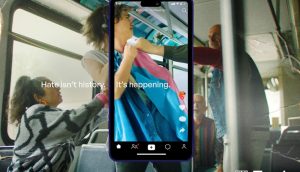Jonathan Lister, managing director and head of Google Canada, is a keynote speaker at Advertising Week, where he’ll be tackling the subject of the evolution of online video tomorrow at the Royal Ontario Museum. MiC talked to him about video’s role in future campaigns.
MiC: Your keynote will address the ‘fundamental shift’ in the way video content is consumed. What is this shift?
Lister: At Google, we think the key shifts are threefold: There’s a shift to a new premium content. There’s a shift away from passive consumption to active consumption. And there’s a shift towards accountability – accountable advertising, accountable video and measurement of your online advertising. Those are probably the three fundamental shifts.
MiC: And how are they affecting the way marketers reach consumers? Can you provide examples of marketers that are doing a good job of addressing this shift?
Lister: There are a few ways. It’s presenting a whole lot of new tools and new targeting opportunities. So marketers can now reach consumers and they can measure the consumers that they’ve reached in a way that they never could before. I think that’s a huge boon and benefit to advertisers. It’s also creating a new audience, or at least it’s kind of revealing audiences where they didn’t exist before: small, passionate interest groups are appearing and presenting themselves on the web. In effect, we’re seeing the ability to use mass market advertising to target small groups of consumers and Canadians, which we’ve never seen before.
The other way is the new creative. What’s being presented now are the opportunities to experiment with creative in a way that we’ve never been able to do before. No longer do we have to worry about high production costs or a massive budget. We can create ‘professional’ UGC – or frankly, just create UGC creatives that tap into the zeitgeist of the moment and often get picked up virally – and get momentum in a way that more professionally created, or more traditional advertising never would have.
So I think it’s new tools in targeting, a new audience and new creatives. And advertisers that have done this well – certainly everyone knows about ‘Evian Baby,’ that’s a great example of an advertiser who has tapped into the medium, both in terms of finding a way to create creative attachment to the medium, but also understanding distribution and creating a whole viral campaign around ‘Evian Baby.’
The other one is McDonald’s McNuggets, and that’s interesting to me because that’s a pure UGC advertiser. That had a life of its own on YouTube for almost a year before McDonald’s created the advertisement out of that UGC campaign, and I think they did it with very few changes to the actual original creative. It’s a great example of UGC that got picked up by an advertiser and became a mass market campaign, but had its genesis on YouTube and a lot of viral views on YouTube before it ever got picked up by an advertiser. Definitely we’ll see more of that. As people post videos and really, really creative people have great ideas, as an advertiser, why wouldn’t you tap into that? I think we’re overcoming some of the initial hesitation and what we saw as risks in doing that.
MiC: In your opinion, how does this shift impact media planning and strategy?
Lister: I think they’re pretty fundamental shifts in a lot of ways – some of which have happened, and some of which still need to happen. Number one, I think there’s a shift to more measurement. There’s an opportunity for advertisers to create goals in a way that they weren’t able to before. Now you can have very granular goals around either everything from the number of views you want and your interaction time, right through to sale, depending on your business. All of those things are measurable now.
So making sure that you plan, that you create your goals accordingly, understanding the medium, understanding what’s possible, create your goals and then go back and measure. So I think it’s creating a new opportunity for a different type of more highly accountable, highly quantitative measurement that didn’t exist before.
I think there’s an opportunity for advertisers to plan much more dynamically. The medium gives itself over to and is very dynamic, so advertisers, who understand this and kind of tap into this, also plan in a much more dynamic manner. That doesn’t mean that their whole budget is cast on a monthly cycle – it simply means that they’re constantly looking for ways to iterate – they operate in slightly more of a test-and-learn environment. So they may plan, test and learn on fairly short cycles, even though they may have an overall budget that is much longer term, so I think the opportunity to be more dynamic exists.
MiC: Do you see online video playing a greater role in strategy, and if it does, how much of a greater role?
Lister: Absolutely. It has to. The amount of professional content online is already significant, so the video assets that advertisers want to advertise against are already online, and then you add the high-quality premium content that is out there that is being consumed in mass amounts, millions of views, against what we might otherwise think of as niche video. And you have a lot of video assets online that advertisers need to be tapping into – that’s just going to grow.
We know that UGC is evolving and becoming more professional and we’re going to see more of it. So absolutely online video plays a much more critical role in the future, and advertisers already understand that. I think they will understand how to advertise against it in more and more meaningful ways all the time.
MiC: What should marketers know about the future of online video to help them stay ahead of the curve? Can you offer any specific advice?
Lister: They should play with it. Things change all the time, so staying involved and staying very active is the number-one thing that people can do to predict the future and see what’s going to happen.
There’s no doubt that Google feels very strongly about mobile. Mobile and video will become really, really important in the next year or couple of years. One of the things we think about at Google all the time is that Canadians continue to surprise us – so much so that we’re not surprised anymore. Their behaviour changes. They’ve adapted really quickly. Every time they’ve been presented with an opportunity, they’ve latched onto it.
Online video is a great example. This didn’t exist three years ago, and now 88% of Canadians watch an online video once a week, or once a month. That’s staggering. That’s a huge transformative change that’s happened in the last three years. We’re going to see that on mobile as well. The only thing that has held mobile back is the devices, and we will see lots and lots of video consumption as people shift their habits to mobile over the next couple of years. There’s no question.























